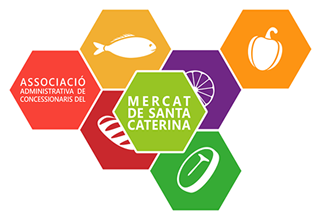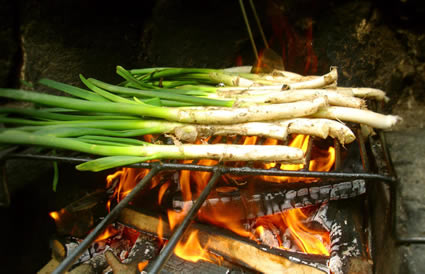Calçot is a white onion (Allium Cepa L.) that is grown in a very special way so that it is elongated, and it has to be one of the excellent typical dishes in Catalan gastronomy. It is typical of some areas of Tarragona, although currently it is cultivated in practically all of Catalonia, and even in other provinces of Spain and abroad.
Calçots are eaten from November to mid-April at a get together called a "Calçotada".
The calçots are roasted with a live flame of vine wood, and when they are well done they are wrapped in newspaper until they are eaten. When the time comes, they are presented on a tile next to a sauce boat that contains the Salvichada, the calçots’ sauce, which is also popularly called the romesco sauce (see in romesco).
Calçot de Valls is protected by a geographical indication, a European quality label that is awarded to certain products based on their origin.
Calçot owes its name to the special way of growing the onion. To lengthen it, "calza" is raised with more soil ("calçar" in Catalan). That is, soil is added to its base so that the onion has to "stretch" in search of light. This process is repeated 2 or 3 times during its cultivation, until a sufficiently long white part is obtained. According to the IGP regulations, this length must be between 15 and 25 cms.








